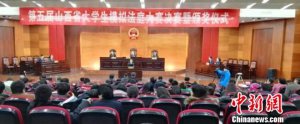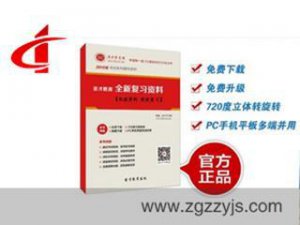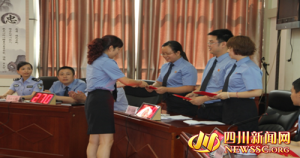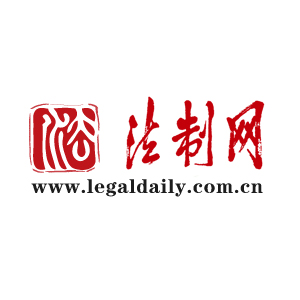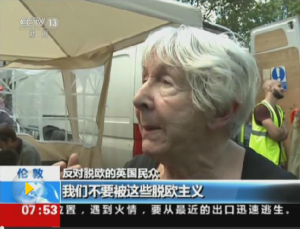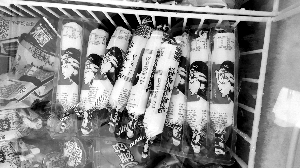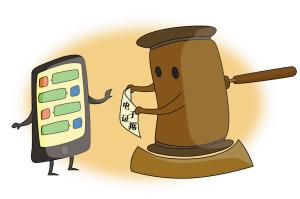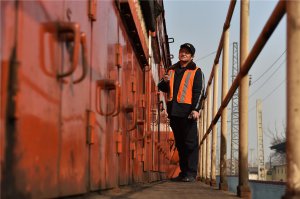|
Student:Dayong Zhou [email protected] The Collectivizationa and De-collectivization in Rural China 周大勇 (Zhou,Dayong) Abstract: the process of de-collectivization took place 25 years ago, however it was uncompleted, which determined that china has to make great effort to continue his rural reform, in order to liberate the peasant and the status of rural region as the Party promised. In China, the non-privatization reform occurred along with the de-collectivization was a uncompleted reform, which remains the defects of both collectivization and small-scale peasant economy, therefore it restricts the development of the rural society, however, the current system seems unable also reluctantly to change it. This paper intents to introduce the process of the collectivization and the most important rural reform in this century, namely the de-collectivization, the demonstrates the progression of de-collectivization, its characters as well as the problems left to be solve. Keywords: collectivization De-collectivization collective ownership incomplete Foreword I am pleased that I am allowed to write the term paper about China. China was influenced by Marxism and walked in detour of history for half century. Before Marxism bankrupted in former Soviet Union and Eastern Europe countries, China had adopted a different way to reform from those countries. Because of the difference in aspects of historical evolution, political forms and natural environment, it’s hard to compare the rural society of China with these former socialism countries directly, also, the progression of collectivization and its end are different in two continents. Rural china before collectivization Collectivization was a mark system of the socialist state. Although in the era of Utopian socialism, Robert Owen for example has already attempted to set up the collective farm, but it wasn’t pursued by force strength of government. Even the founder of communism Marx didn’t agree that communism could be realized in undeveloped countries with extremely poor productivity . It was Russia, the serf country, in which Communist took power without adequate preparation; collectivization was implemented by force, in order to consolidate the rule in grass-root countryside. This experience has influenced China and Eastern Europe, because one of the merits of the collectivization lies in being easy to be managed, the other lies in being easy to deprive peasants. China was a backward country, which suffered from ignorance and war for centuries. Throughout the centuries some 80 to 90 percent of the Chinese population were farmers and live in one of some 900,000 villages, which have an average population of from 1,000 to 2,000 people. Villages were not self-contained, self-sufficient units. Clusters of villages centered on small market towns, which linked them to the wider economy and society by providing not only opportunities to buy and sell but also opportunities for entertainment, information, social life, and a host of specialized services. The traditional Chinese elite, often referred to in English as the gentry dispersed across the country and often lived in rural areas, where they were the dominant figures on the local scene, normally ruled villages. Although they held land, which they rented to tenant farmers, they neither possessed large estates like European nobles nor held hereditary titles. However, they traditionally interpreted central policies and national values for villagers. As in feudal relationship, the peasants and gentry live depend on each other. Gentry provided land to poor peasants and tenant, and work with rich and middle peasants to secure the order in village, for instance opening school and building basic infrastructures to maintain there social status. In Chinese history, at the beginning of very dynasty, the land relationship between landlord and poor peasants were comparably fair, that meant, peasant have parcel farmland to live on. But land tended to be concentrated on end every dynasty, then there might be a peasant uprising led to a new dynasty and retribution of land. This is the basic clue of social evolution in China before communist period. After the Chinese Communist Party came into power in mainland, it had to keep its promise, which it made during the period of war to encourage the peasant to join the army, that it would gave peasant their own land. The first major action took place from 1940s to early 1950s. June 1950, a new Land Reform Law of new People’s Republic was promulgated and stipulated nullification of the feudal land ownership system, and institutionalization of the system of land ownership by peasants, in which the Party sent agents to every village to carry out the land reform policy. This in itself was an unprecedented show of political power and the resolution of transform an old society. The reform was successful, because the peasants supported the policy; most of them had been waiting for the reform for long time. In the light of the reform law, land were redistribute from the landlords, land-owning trusts or wealthier families to the poor segments in the same village; village elites, who might be expected to go up against the Party and its programs were brought down; new leadership was established by poor peasants who showed the most loyalty to the party's goals; instead of kinship group or patron-client ties, class status became new relationship among villagers. the process of Collectivization However, the Party’s leaders were not satisfied with the privatization of land, at one hand, such ownership, according to the doctrine of socialism, should have been abolished in the state of socialism, at another hand, private ownership of small peasantry had no function of property accumulation for the country. At that time, in order to accelerate the construction of socialism, China had launched The First Five-Year Plan after the Soviet model; heavy industry development was profound stressed since the leaders of Communist Party regard socialist country as a country with developed industry sectors. However, the situation in early 1950s was not ideal for a new country. Pressing of needs for food in a country with burgeoning population, domestic capital for investment, and purchase of Soviet-supplied technology, capital equipment, and military hardware. To satisfy these needs, collectivize agriculture was put forward. Collectivization was regard as a method to turn countryside to stabile backing, which can be managed as semi-military and had rare contact with outside, so that the government could press the price of agricultural products by means of scissors difference between cities and countryside, and seize huge numbers of profit from agriculture economies to support the industrialization in city. At the same time, the government had already nationalized banking, industry, and even trade. Private enterprise was already virtually abolished in national wide. Despite internal disagreement as to the speed of collectivization, preliminary collectivization was launched since 1952. China's peasantry saw Chairman Mao and the Communist Party as heroic much more than Russia's peasantry had seen Stalin and the Bolsheviks as heroes, and through 1956 the peasantry cooperated with the Party. There was none of the resistance and warfare that had accompanied the collectivization of agriculture in the Soviet Union. The collectivization of agriculture was basically completed with the establishment of the people's communes in 1958. The People’s Commune system was defined as a unity of politics and production, in which all members of the commune jointly owned property. Essentially, the commune system was based on private contract of its members and the principle of voluntaries and mutual benefit, however, it turned out yet as coercive institutional arrangement, which was made by government with political power. In the movement to achieve the People’ s Commune, peasants had no choice whether or not to join. Communes were designed as large, embracing scores of villages created by combining some 20 or 30 advanced producers' cooperatives of 20,000 to 30,000 members on average, in some cases the membership varied from as few as 6,000 to over 40,000. It was instituted as an organization with functions of the lowest level of local government and the highest level of organization in agricultural production. Communes consisted of three organizational levels: the central commune administration; the production brigade , and the production team, which generally consisted of around thirty families. This kind of institution was an organization of hierarchies, in which the commune acted as political unit and top manager, the brigades played role of co-coordinators between the commune and the basic production teams. The production team was basic units of production and accounting. Since the people’s commune system was a tool established to extract resources from agriculture sector for industrialization, as a result, it neglected peasants’ incentive completely. In order to let the people’s commune system run, the central government designed an relative effective mechanism to encourage managers in each hierarchy to work enthusiastically, yet, in each level, the managers were treated differently and there was a clear difference in aspects of identity and welfare between the managers of the commune and of the brigades or production teams. The commune was defined as administrative organ and executed the central government’s orders, and paid from central government’s budget, therefore the managers in the level of commune were “state cadres” , that means they were formal governmental officials and got wage monthly. These state cadres could be promoted and became officials of governmental divisions in higher level. Brigades and production teams were collective economic organizations, their running expenses came from production teams’ tribute. Managers in brigades level were called “collective cadres” . They were remunerated in their own production teams according to their labor quotas. Their wage was paid in the form of products instead of money. Managers in production teams were“team cadres”, they were also members of the production team. They worked as peasant like their workmates, and were paid in products according to labor quotas. Team cadres could be promoted to collective cadres. Collective and team cadres had little possibilities to be promoted and became members of state cadres. Nevertheless, as collective and team cadres had some privileges. For example, collective managers had the power of assigning state’s delivery quotas and production tasks among production teams, they determined who could enrolled in state-owned factories, universities and army. The production team managers executed the power of assigning work and distributing products among collective members. Furthermore, in the period of many political movements and class struggles, the identity of cadre could protect their families, relatives and themselves from being denounced and bullied (Tan, 1999). At beginning, the commune itself was decorated as the representation of socialist society and had all merits of public ownership. Although nearly all the private property had been deprived, peasants had to praise the new system profusely. it was true, most poor peasants found that their lives changed, by eating in the public dining they didn’t need to worry about their own budget anymore, and by working together, they were not necessary to try their best. Following propaganda appeared in newspapers everyday: The public dining halls are distributed in a way that members need walk only a few minutes from their homes to take their meals. On the freshly whitewashed walls of the one on Shihfuchien Street, a typical establishment, there is a big slogan in red, which reads, "High Spirits for Higher Production!" Its kitchen, to which the visitor is drawn by the aroma of food and the clatter of pots, is managed by Tu Hsiu-chen, the first volunteer cook, who has since learned large-scale catering from the chef at one of the city's restaurants. The walls of the spacious dining room are decorated with paintings, as a home might be. Its tables and chairs, though simple, are scrubbed to a shining cleanliness. The food is fresh and tasty -- vegetables are grown by the commune itself. The staff make a special point of studying the diet and preferences of old people, children, nursing mothers and members with ailments. There is a separate room for parents with small children, provided with low tables for the little ones.( People’s Daily, 1958) However, in practice, this ideal, extremely centralized form commune didn’t keep running well in most areas. Very soon it became clear that in most cases the communes were too clumsy to carry out successfully all the managerial and administrative functions that were assigned to them. The cooperative led to low-efficiency, the advantages of large-scale productivity didn’t arrive as peasants anticipated, productivity began to drop and discontent emerged. The reason lies in insufficient utilization of resources and lack of incentive of peasants. At one hand, the output of cooperation comes from all members’ work, in which the tribute of single household is difficult to be measured. So that opportunism like shirking happened naturally very frequently. An effective way to prevent shirking is to have all members supervised, but the seasonal work and spatial diversity of agricultural productive activities make it difficult to totally supervise. At the other hand, although brigade and production team cadres were obliged to complete state’s planning and all kinds of deliveries, the control right and residual claim of the people’s commune system were in the state’s hand, these cadres at grass-level could not design any reasonable incentive mechanism to encourage peasants to work hard and produce according to reasonable natural condition, such as soil, irrigation and farm year. The way left for brigade and team cadres was to punish peasants by struggling against them or maltreatment. But the brigade and team cadres also belonged to members of production teams, they and their families lived in the same community with their subordinates as well, so punishing peasants could also make themselves in trouble. Moreover, under the property rights structure of the commune system, the rest of output was not belong to the commune, brigade or even production team, but to the governments of higher level. This made the supervisors’ effort unrelated to any reward. As a result, even the supervisor himself has not enough incentive to work and shirk himself sometimes. In a word, under such conditions of poor supervision, in which all the work was distributed equally among all members at the lowest level--production team, shirking became every member’s rational choice and further weakening the efficiency of the system (Lin,1990). De-collectivization To prevent peasants from slow down, shrinking and escaping in work, and assure the system could keep on moving, the party collected all productive equipments and forbid members in people’s commune engaging in private production and business on the one hand, and at same time deprived peasants’ right of migrating from countryside to city or between districts by means of household registration on the other hand. Nevertheless, such policies had no effect on improving incentive of peasants, but they formed at least political press on very member of people’s commune, because it turned out that everyone’s only routine is to stay in the commune and finish one’s task. Without the right to leave or get better than others, peasants commonly chose to work with little effort, e.g. a passive method, to evade production tasks assigned by leader. Little accumulation and shirking made countryside widely fall into poverty , rare rural region had good conditions to develop industry or to improve commerce, infrastructures went worse, productivity sank quickly. The most serious crisis for agricultural collectivization happened between 1959 and 1961. GNP decreased from 213.8 billion Yuan in 1958 to 180.0 billion Yuan in 1962, with an average annual reduction of 15.1% in gross industrial production value and an average annual reduction of 19.3% in gross agricultural production value from 1958 to 1960. Owing to the serious shortage of food, a great famine took place in the whole country and at least 30 million residents died (Tan, 2000). Discontent with such system broke out, in some areas, peasants didn’t want to relied so heavily on orders from above and made so little allowance for local conditions or local initiative. The severe crisis forced the Party to adjust their policies. From 1961 on, commune functions were reduced to administration and co-ordination, production team was confirmed as the basic unit of accounting, certain production decision making was delegated to production teams, which were allowed to retain some income to overcome problems of egalitarianism; households again allowed to have small private plots and sidelines for planting vegetables, and a limited opening markets for transaction between urban and rural areas. However, these adjustments didn’t mean to change the system of people’s commune, but only to prevent peasants from rebel. From 1966 to 1976 China suffered the disaster of Cultural Revolution , there were large institutional swings took place in this period, in which co-operative moved from small to large and from team to brigade to commune again, local free markets, sidelines and private plots was prohibited again, and political factors had a great influence on production decisions. In late 1970s, after the Leader Chairman Mao passed away, the requirement for improving agricultural productivity came alive. Administrators in provincial-level units with extensive regions of low yields and consequent low standards of living began experimenting with new forms of tenure and production. To avoid frontal conflicts of wide scope with government’s policies and the main ideology, a gradual approach was adopted. The first step of reform was to divide the production team into groups and to fix yield quotas for each group. Each group signed a contract with production team, the contractual items included the conditions of using land, laborers, farm tools and draft animals, the expenditure, labor contribution, rewards for excessive labor contribution and so on. After completing the tasks assigned by the production team, the output could be distributed among work groups according to their labor quotas. And then, the further solution was put forward, namely the typical form of fixing quotas called “all-round contract”, which was initiated by a few brave peasant secretly in Fengyang county of Anhui province. this contract regulated, household was allowed to cultivated a certain parcel farmland in the group, if grain quotas assigned by the state and the collective accumulation were accomplished, the household could own all the residual output. In the light of the contract, peasants were given directly stimulation to produce. The experiment was deemed successful and popular, and it soon spread to all districts. At another side, political situation was appropriate with the reform form below. In the Eleventh National Party Congress, held August 12- 18, 1977 proclaimed the formal end of the Cultural Revolution, blamed it entirely on the Gang of Four , and reiterated that "the fundamental task of the party in the new historical period is to build China into a modern, powerful socialist country by the end of the twentieth century." The reformer Deng Xiaoping was elected as vice chairman and back to political stage and suggested a series of reform plans, though many contradictions still were apparent, change of policy was regarded as necessary. Rehabilitations of Deng's associates and others sympathetic to these reform plans were stepped up. Not only were some of those purged during the Cultural Revolution returned to power, but also individuals who had fallen from favor as early as the mid-1950s were rehabilitated. It was a time of increased political activism. In November 1980, the Central Committee of Communist Party of China issued the document Some Issues of Further Reinforcing and Improving the Responsibility System in Agricultural Production. This article manifest the first time that the Party accepted the production responsibility systems developing in practice. In the document fixed output quotas of farmland for each group and responsibility contracts in some specialized obligations were indicated, at the same time, the fixed output quotas for household was also regarded as positive. Under the encouragement of government’s policy and related support measures, plenty of production responsibility systems developed very rapidly in rural areas. In 1981, a wide deeper reform called fixing the contribute quote for each household (bao gan dao hu), which was much more radical, was implemented. In accordance to the system, all collective lands in production teams were to be distributed among households based on their population or laborers. The households could manage the lands, made production decisions by themselves, and bore the results. When tasks assigned by upper government and the collective accumulation, e.g. a certain quantity of grain and livestock, were completed, the remained products could be owned by the households and not distributed among members in the production team. Moreover, if the household made sure that they have enough ration, they had right to sell the left grain to state owned agricultural enterprises or consume them as they want, usually feeding livestock or making wine for example. That meant the model from Fengyang was finally admitted by Party. In October 1983, the Party and the State Counsel issued the document Notice of Separating the Co-operative from Politics and Setting Up the Township Government and required the cooperative to separate from local government. The act ordered that the people's communes were replaced by administrative townships. By the end of 1984, 98% of production teams had taken the reform of Household Responsibility System. It was until then, the collectivization system was dismantled completely. Some Characters of De-collectivization and Problems left No restitution Yet, de-collectivization and the implement of the household responsibility system is neither a reform of the ownership of land nor a process of privatization. As we have mentioned above, after the Communist Party set up its own government in 1949, it started land reform and distributed lands to the poor from landlords and rich peasants. Peasant acquired parcels of land according to the labor forces, then land were registered under name of each household. Before the eve of collectivization, most of lands in rural China were legally privately owned. But when de-collectivization began, peasants did not get back their former lands again. The household responsibility system only distribute the right of manage and benefit of lands among households according to their population or laborers. So, the de-collectivization in China did not like that in most of East European countries such as Bulgaria, Czech, Hungary, Poland, Romania and Slovakia, but like that in Albania. That is to say, there was no restitution of land. However, in former East European Countries, whether restitution was implemented or not, the de-collectivization had symbiosis with privatization. In China, although during the process of de-collectivization there were in reality some opinions that lands should be restituted, such voices were not accepted, nor even discussed. The reasons why restitution of land in the de-collectivization of rural China did not happen may lie in some historic reasons. First of all, although peasants in China had private ownership over lands before the collectivization, large percent of peasants owned farmlands that did not belong to them before, they obtain them from political transformation. Theoretically, violence can’t consist the legal reason of transfer of ownership over real estate, therefore even after the terrorize during the land reform at beginning of 1950s, the private ownership of lands, which was made out by the communist government, had not yet became stable and commonly accepted. However, the former landlord class had rooted off during the political movement, land contacts and register books of land title had been destroyed, no one dare to challenge the power of Communist Party anymore. Since the collectivization began soon after the land reform, the new established owner relationship was broken again, when de-collectivization came about, without supports from the central government, most of peasants only took the household responsibility system as another chance of equally distributing lands, just like the land reform in 1949. As to descendants of former landlord class, they might have not forgotten the experience of their poor ancestors’: claiming private right before the Party which regarding public ownership as universal truth is a dangerous deal. Secondly, different from most country in former communist east European countries , in which farmers’ nominal ownership of lands was remained, even though their lands were requisitioned in collective farms without any payment, and so that it was easy for peasants in these countries to take back the land when the collective farms went over. On the contrary, in China, private ownership of land was totally abolished as soon as the people’s commune system was set up, after 20 years, the collective ownership had already fest basis. As a result, the transaction costs of restitution so high as to wipe it out. That means, even a peasant want to take back the former farmland which belonged to them, it’s very hard to him to collect the relevant evidences to support his claim, moreover, there was no legal justice process to support such application. So normal farmer would rather to accept the Household Responsibility System. Finally, the key reason lies in the socialism system itself. Even though the Communist Party of had poor performance in leading the country and its people to wealth and happiness during socialist revolution, Chinese people have taken socialism as the characteristic of the country for grant, after all the slogan “ Socialism saved China” has been deeply impressed. So that even after the Culture Revolution, most people still propped up the Party. The Party led the rural reform and decided the de-collectivization. However, the reform is a “liberation of the rural productivity”, which suit the requirement of the Party. Because the Chinese Communist Party insisted that his mission is to realize socialism, and socialism is based on public ownership system. Collective ownership was deemed as one form of public ownership in rural regions, so that as China kept on the road of realizing socialism, “land in rural areas belong to collective” was certainly remained after rural reform, and regulated in the Constitution of 1982, which is valid till now. At the time of de-collectivization, the dissolution of people’s commune and the wide implement of responsibility system were regard as a great innovation. According to the statistic, The Household Responsibility System did bring about a more prosperous agriculture in China. From 1978 to 1984, grain output in China increased at an annual average rate of 5% and the gross value of agriculture by 7.7% (Lin, 1997). In contrast with former European countries, the de-collectivization seems bring more benefit to Chinese peasants at beginning. So that at that time, rare peasant did realize that such a reform without transformation of ownership was incompletely. However, The natural shortcomings of the de-collectivization would surely bring a series of problems. institutional problem: land distribution As we showed above, the de-collectivization ran smoothly and the introduction of Household Responsibility System has got a great success, although it could not address everything as only an institutional innovation. After several years of practice, it has been already proved that there are a number of weaknesses and limitations remained from the incompletely de-collectivization. One has to confirm, that the collective ownership and contract system led to the inequity in both economic and political features. In economic view, during the de-collectivization, farmland was distributed to individual households in form of fragmented farming units. The principle of land distribution was derived directly from collective ownership. Farmland in a village was owned by all of its members collectively. As a result, every member had equal right to claim on distribution of the land according to certain norm, which was based primarily on the size of the peasant family. In reality of China with abundant population and limited land, the amount can be distributed to each household was very small. Moreover, land differed from each other in terms of soil fertility, irrigation conditions, location and so on. In many cases, a household had to obtain pieces of land from each of the grades. as a result, the sum was not only insufficient but also disjointed and scattered around villages. Large areas of cultivated land were wasted in the form of paths and boundaries separating households' contract field. A survey conducted by the Chinese Ministry of Agriculture indicated that in 1986, among 7983 sample villages from 29 provinces, average cultivated area per household was 0.466 ha (7 mu) fragmented into 5.85 plots, each plot on average 0.08 ha (1.2 mu) (Ministry of Agriculture of China, 1993) . This fragmented structure of family farming has remained largely untouched after implement of contract system and has detained the possibilities of using relatively advanced mechanical agricultural equipment and infrastructures. Under such system, farmers turned to be short-term in action. According to the distribute rule of land in household responsibility system, land is to distribute depended only on villager status, babies and villagers' new-comer such as newly married bride from other villages were all eligible claimants, which having equal rights to share equal amounts of land in this village; on the contrary, when a villager left or died, the right of land claim would automatically withdraw. As population increased, villages had to readjust the distribution structure, which further subdivided the farmland . The endless redistribution of farmland resulted in many problems, including: 1) the situation of a small and fragmented farming structure further deteriorated; 2) worrying about the risk of losing their land as well as investment, farmers had little incentives to improve land conservation and agricultural infrastructure - irrigated land, one of the most significant components of agricultural infrastructure in China, remained almost unchanged during the 1980s; 3) farmers over-exploited the soil to pursue short-term profits; 4) the course of land redistribution was also costly, it required labor and time in organization and execution. (Chen, 1999) Another problem is that farmland was generally badly endowed with the appropriate human capital. Since egalitarianism was the general leading principle rule, which gave little consideration to interfamily differences such as labor capability, education and individual preference . As a result, some large households with a incomplete labor force could have comparably much more land to cultivate, meanwhile other smaller households, above all those specialized in agriculture, could have only inadequate land for full employment. Such kind of problem was much worse in rural areas experiencing rapid township or village industry and urbanization. In those region there was often deterioration in the agricultural labor force since most of capable labors tended not to work at home as a farmer. There were many who did not give priority to cultivation and at times even let the land lie unused. Consequently, the farmland was underutilized . Upon preceding analyzing, we can see that, in order to pursue egalitarianism on surface in distribution of land, in the process of the de-collectivization sacrificed economic efficiency. Thus, if the land was private, then those difference arouse from distribution will decease after enough time, because the free market will lead to equal efficiency through the choose of market. However, such political background lacked from beginning on, so that the shortcoming of a non-privatization de-collectivization can’t be corrected or even be enlarged because of problem of political system. One of the main reason is political structure over the collective ownership. First at grass-root level, it was usually the village head, who takes the power to decide distribution since decentralization. So that the cadre family or their relations will surely benefit from the distribution. Having a cadre in the family seems to be a certain prerogative in using their political status to accumulate wealth. At one hand, Village cadres may allocate more fertile parts of the village land to themselves and determined more favorable grain sales quotas for themselves. And also, cadres have more opportunity to build personal relationship with higher level and other important departments, rural credit banks or transportation companies for example, so that they have more chance to obtain material benefit than normal peasants. As we see, most of collective enterprises and private economies in rural areas have tight relationship with local governments, at the basic level, with villager cadres, most rural enterprisers are villager leader themselves. Furthermore, cadres and their relations generally tend to break the policy of birth control, because they are capable to support more family members, and their kin will strengthen their economic and political power in return. At another hand, though according to the election regulation of rural cadre in china, these village cadre should be elected directly by villagers, who have common interest in the community, this rule has been almost never put into practice. Under one Party system and public ownership system, all important resources are gathered in the Party’s hand, as a result, instead of election, the opinion from higher level plays a significant role, in order to carry ort the policy of Party efficiently. In fact, two factors determine the candidates in appointment of village head, one is the relationship with official of higher level, and the other is kinship. Consequently, cadre family takes all advantages to maintain their power and status through such appointment. So, cadres in rural China don’t represent the benefit of their village members, but the power of the Party as well as the family, there is no possibility for peasants to claim equality or save their from suffering as a peasant. In a word, after a short flourish in rural China, which came along with the de-collectivization and the implement of Household Responsibility System, most peasants have to face the irrational occupation and distribution system of farmland and the political system, which is impossible to change. Besides there was strict limitation prevent peasants from abandoning their responsible land and rushing into cities, so that the peasants found it is hard to change their situation or turn it more better and free. This may explain why in rural china exists always the tendency of over population but the income of household began to decrease only after less than 10 years from the de-collectivization. As a result, land reform in China has emerged as a difficult issue in rural areas of exchange between social equality and economic efficiency. It seems obvious that since the mid-1980s the wide rural society has been caught in this predicament: where social equality or equity worsened, and at same time economic efficiency held back.. According to statistics, average net income in countryside has been slowed down for years. In 2000, the household average income only reached 272 dollars, but the Gini coefficient in China base in urban and rural areas rose from 0.21 in 1978 to more than 0. 46. 总共2页 1 [2] |


